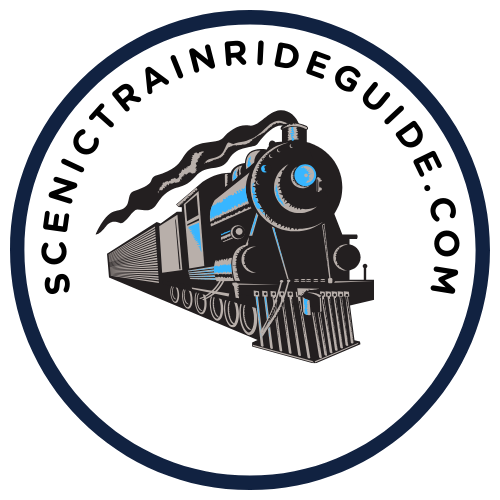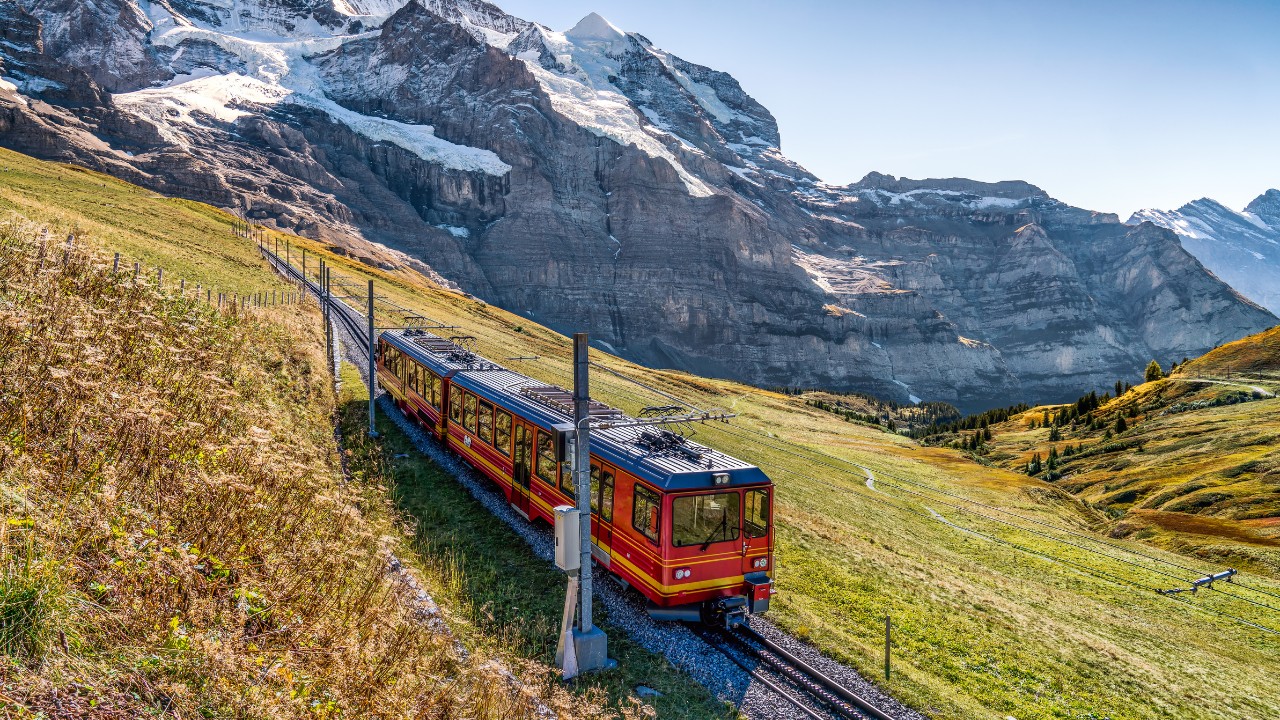The Jungfrau Railway is one of the most amazing scenic train rides in the Swiss Alps because of its spectacular views and historical significance. In this article, you’ll discover details on all of this information so you can plan an awesome trip here.
Basic Info:
- Name: Jungfrau Railway
- Location: Kleine Scheidegg to Jungfraujoch
- Ticket prices: CHF 76-152 ($89-$200 USD)
- Duration: 50 minutes
- Hotels options: See Kleine Scheidegg hotels and Jungfraujoch hotels
Background Info:
The Jungfrau Railway begins at Kleine Scheidegg, where you board the cogwheel train heading towards the Jungfraujoch, often called the ‘Top of Europe.’ This isn’t just any train ride; it’s an experience! The steep climb and tight turns of this train are designed to handle some pretty challenging terrain, making the journey an adventure in itself.
Beyond the technical feats, the Jungfrau Railway holds a special place in Swiss heritage. Built during a time when such projects were unprecedented, the railway represents a pivotal moment in the Alps’ tourism history and I would say it is one of the top scenic train rides in Switzerland. Today, it continues to draw tourists from all over the world.
With picturesque landscapes (details coming up) unfolding outside your window and the thrill of ascending to one of Europe’s highest railway stations, the Jungfrau Railway journey is a magical experience. This introduction only scratches the surface of what awaits you.
Ticket prices:
Ticket prices can vary depending on the type of trip you’re considering:
- Adults: CHF 152
- Kids between 6 and 15: CHF 76
- Children under 6: Free
- Discounts? Yes there are discounts available if you’ve got any of the Swiss travel passes, so it’s worth exploring those options if you’re planning more adventures in Switzerland. There’s also many great things to do in Zurich (1-2 hours away).
Duration:
From Kleine Scheidegg to Jungfraujoch, the trip usually takes about 50 minutes. Factor in some time for lingering at the stops and soaking in the views, and you’re looking at a couple of blissful hours of pure mountain magic.
When to go:
Curious about when you can hop on this spectacular ride? The Jungfrau Railway operates year-round with a pretty consistent schedule. Trains run frequently, especially during peak tourism months (details coming up), so there’s rarely a worry about missing the ride unless you’re at the height of the busy season. Always good to check the official website to avoid any surprises, though.
Booking tickets in advance online can be a real lifesaver, ensuring you get your spot on the train without a hitch. Many booking platforms also provide detailed information on available ticket types, schedules, and any current promotions. Plus, having a ticket in hand means one less thing to think about as you gear up for the journey.
Sights Along the Route:
One of the first highlights is the Eigerwand Station. Located inside the Eiger Mountain, its panoramic windows provide a unique perspective of the surrounding glaciers and mountain landscapes. It’s a pit-stop that practically begs for a selfie.
Further along, the Eismeer Station offers another opportunity to step out and take in the views. This station, nestled amidst the glacier fields, gives you an up-close look at the icy wilderness. It’s a perfect spot for capturing unforgettable photos that’ll make all your friends envious.
The journey doesn’t just offer stationary beauty; keep your eyes peeled out the window for a chance to glimpse some Alpine wildlife. Mountain goats and even rare bird species make appearances, adding a bit of wilderness magic to the trip.
Then, of course, there’s the grand finale: Jungfraujoch. Once you arrive at the Top of Europe, you’re greeted with panoramic views that stretch across the Swiss plateau to the Vosges Mountains in France. It’s the kind of view that might leave you speechless. Plus, the Snow Fun Park and Ice Palace at the summit provide plenty of entertainment and photo ops, ensuring your journey ends on a high note.
Photos:
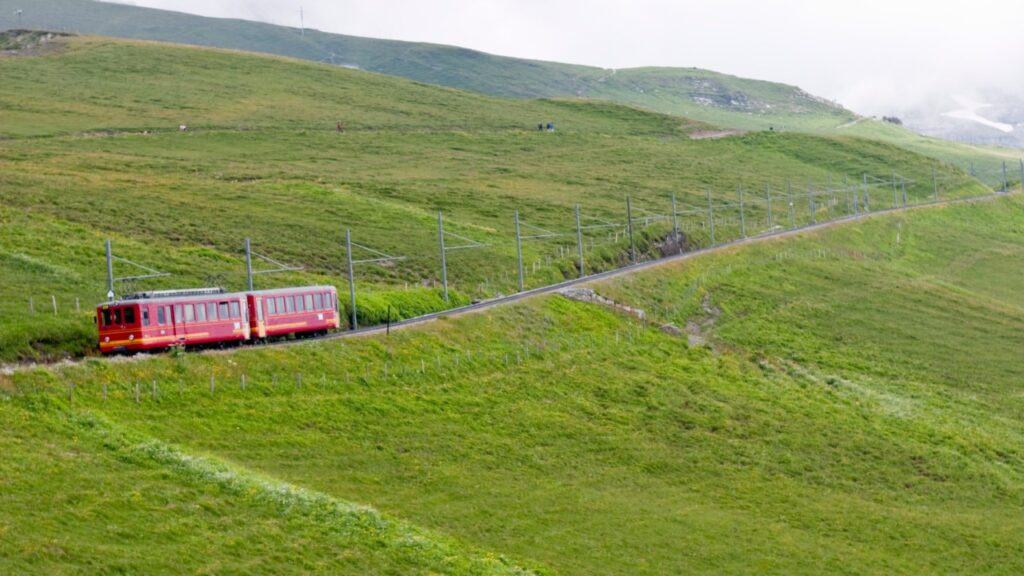
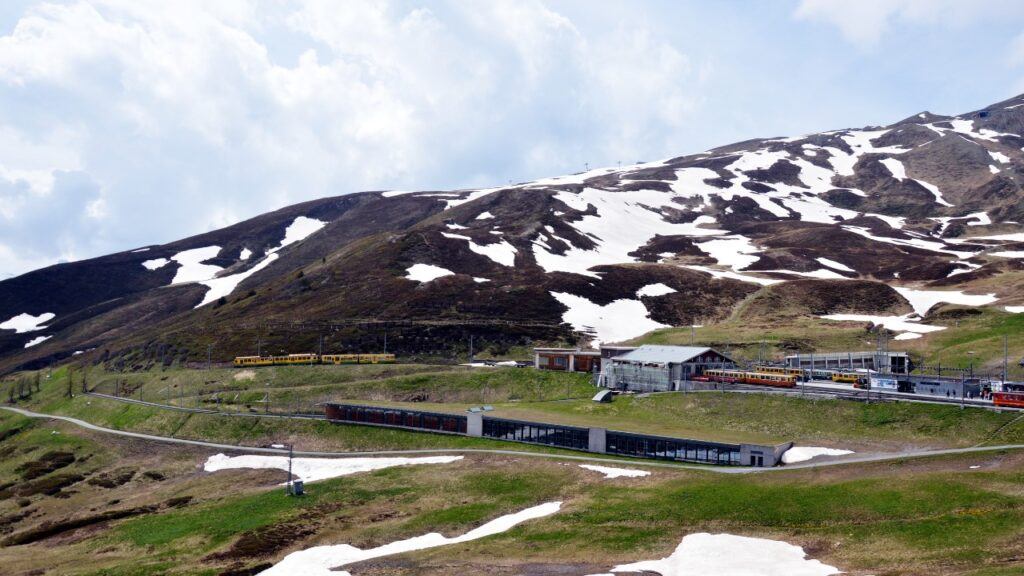
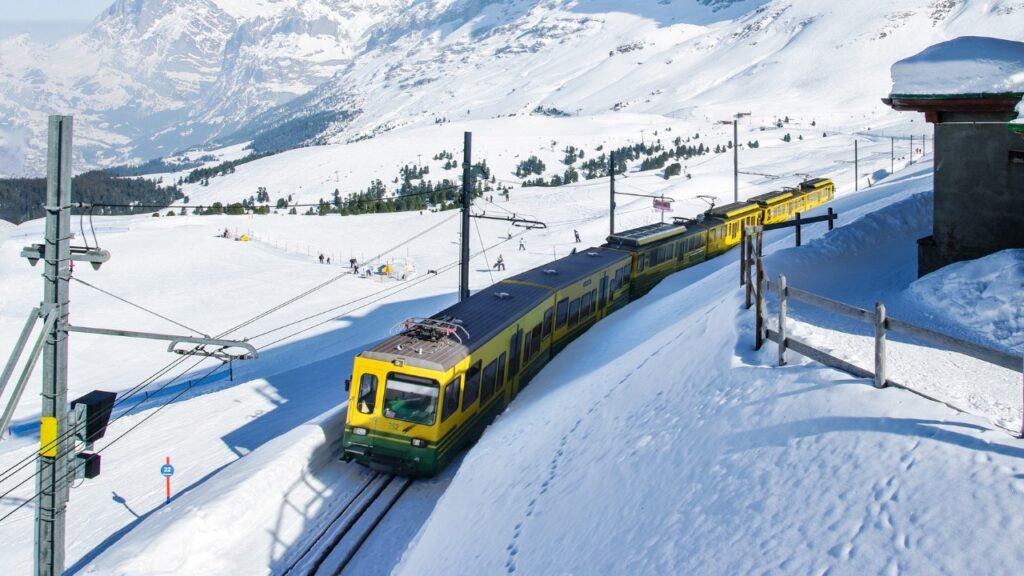
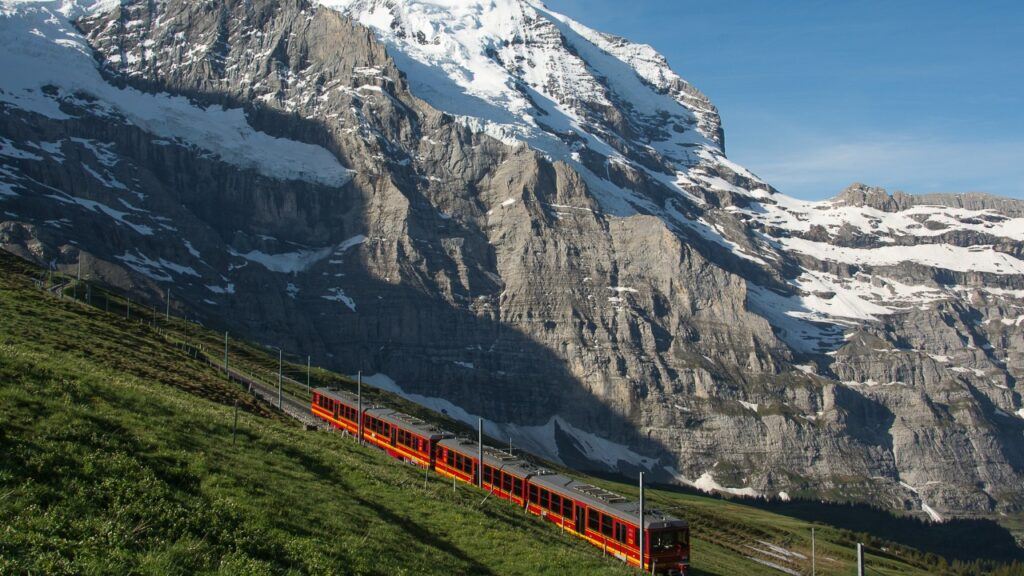
Best Times To Go:
Winter transforms the landscape into a snowy wonderland, perfect for those who love the crisp air and winter sports. It’s quieter, too, which means fewer crowds and a more intimate experience.
Spring and summer unfold a different kind of magic (peak season). The snow melts away to reveal green meadows dotted with wildflowers. This is hiking season at its best, and the longer days give you more time to explore more sights.
Autumn offers a middle ground, with fewer tourists and a kaleidoscope of colors as the leaves change. The weather is still pleasant, but without the hustle and bustle of the summer months. It’s a fantastic time for photographers looking to capture the beauty without elbowing through hordes of people. September and early October are particularly ideal for clear skies and mild temperatures.
Special Events:
- There’s a number of special events throughout the year like the Lauberhorn Ski Race in January, a thrilling event you won’t want to miss if you’re in the area.
- The Jungfrau Marathon in September is another highlight, drawing runners from all over the world to compete with the mountains as their backdrop.
Both events add an extra layer of excitement to your visit. Regardless of when you go, a few tips can make your journey smoother. Booking your tickets in advance, packing layers for unpredictable weather, and bringing a good camera can enhance your experience. Each season offers something unique, so there’s no bad time to visit, just different kinds of awesome.
